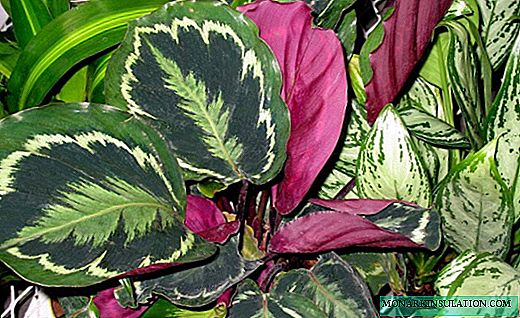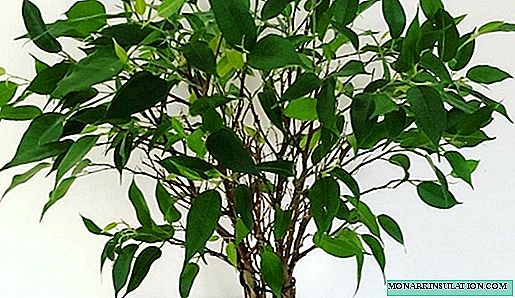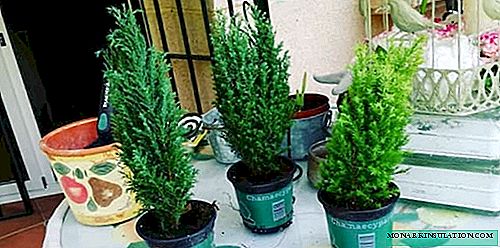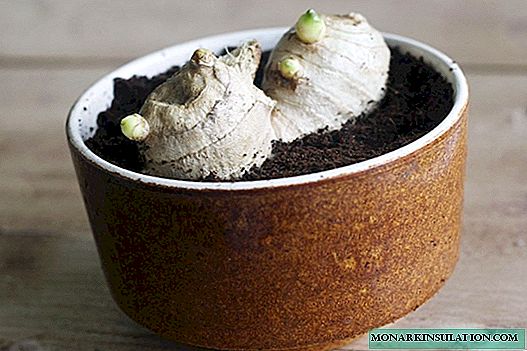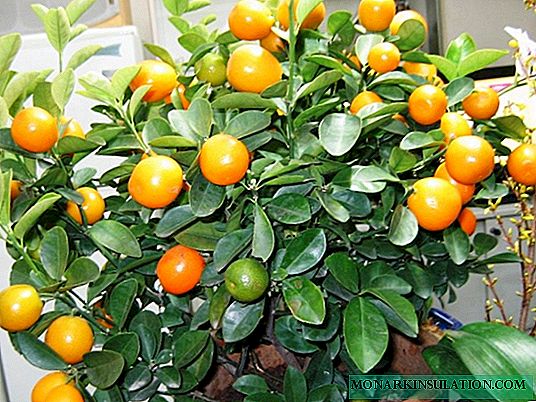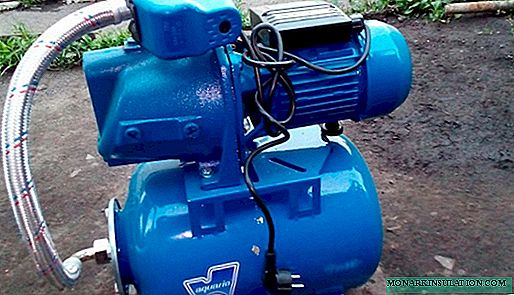
The water supply of a private house located outside the centralized system is based on the supply of water from autonomous sources - a well, a well or a storage tank (less often). A feature of underground sources is the lack of pressure necessary for lifting water upward. Therefore, for the continuous provision of a site or building, you need to purchase a regulatory installation for water delivery - a pumping station or, in other words, a hydrophore for a private house.
The purchase of pumping equipment is based on the characteristics of all parts of the system, their compatibility, compliance with a specific source (well or well), as well as the choice of location for installation. Installation of a pumping station can be carried out at various stages: during the construction of a house, drilling a well or repair work.
For installation, you will need a closed, flat area of a minimum size (1-1.5 m²) located in the utility room, basement or on the street. If you consider the corner in the house to be the best place (bathroom, porch, cellar), then take care of good sound insulation, even if the equipment is equipped with the necessary certificates.
Aspect # 1 - equipment device
Until now, two types of hydrophores are equally actively used:
- membrane equipped with an elastic tight membrane that separates the compartments with water and compressed air;
- membraneless, in which water and compressed air are not separated, are in the same tank.
The membrane is a dense rubber bag that is not in contact with the walls of the tank in which it is located. Hydrophores with a membrane device are compact, smaller and do not require a large area for installation - ideal for homes with a lack of free space. The tank volume is an average of 30-50 liters, but if necessary, you can find 80 and 100 liter models.

Diagram of a pumping station with a membrane hydrophore equipped with a self-priming pump and a water pressure sensor, on whose readings the pump operation depends
The self-priming motor is mounted on top (for small models, for large models it is installed nearby) and is connected to the tank with an elastic pipe. A nipple is used to adjust the pressure of the compressed air. Due to the design features, the membrane device produces less noise. Some models have the option of replacing a worn membrane. If you have to buy a backup, make sure it is certified, as the material (usually rubber) comes in contact with drinking water.

Diagram of a pumping station with membraneless hydrophore, having the form of a large reservoir on supports: in the lower part of the tank is water, in the upper - compressed air
A membraneless tank is a vertically located large cylinder with a volume of 100 liters or more. To supply water complete with a membraneless hydrophore, it is necessary to purchase a self-priming vortex type pump. The optimal pressure of the pump should not exceed 0.6 MPa, since this indicator is maximum for a larger number of hydrophores.
Regulatory standards allow the use of pumps with high pressure, but subject to the installation of a safety valve, the drain of which leads to the sewer.

For better functioning of the hydrophore and protecting it from damage on the pipe, an additional water purification filter is mounted in front of the device
The stabilization of pressure in the device and the entire water supply system, the optimal pressure at each point of the tapping (in the kitchen faucet, in the shower, for watering the garden), and protection against heavy loads depend on the correct choice of hydrophore equipment.
It should be remembered that the work of hydrophore is based on two factors:
- change in pressure indicators;
- volume of water used.
That is, the number of automatic on-offs in one hour can be different.

Standard hydrophore operation scheme: water fills the storage tank until the pressure switch trips; the pump starts again after emptying the tank and increasing the pressure inside the tank
Consider how pressure affects start-up. Suppose a crane is turned on in the house. The volume of water inside the device began to decrease, and the compressed air cushion, on the contrary, increased, which causes a decrease in pressure. As soon as the pressure reaches the minimum mark, the pump automatically turns on and pumps water until the air volume decreases, therefore, the pressure does not increase. The pressure switch responds to this and shuts off the pump. The maximum pressure indicator inside the tank is set by the equipment manufacturer, however, the operation of the relay can be adjusted independently.
It is necessary to take pressure into account when choosing a pump for irrigation: //diz-cafe.com/tech/motopompa-dlya-poliva-ogoroda.html
Aspect # 2 - unit volume and pressure
The main factor that should be relied upon when choosing the volume of the accumulator is the average amount of water consumed by the family. Productivity is calculated based on the amount of water spent in 1 hour. There are averaged values, but they are usually taken as a minimum. For example, a family of 4 people living in a small private house needs a hydrophore with a productivity of 2-3m³ / h. A large family living in a two-story cottage with a garden should expect a productivity of at least 7-8 m³ / h.
In addition to a dry calculation of the number of inhabitants, their lifestyle should be taken into account: some wash once a week, others daily. A number of household machines and appliances also work on the water - washing and dishwasher, hydromassage and shower systems, automatic watering of the lawn or garden.

Tables offered by manufacturers are designed for installation of equipment by professionals. If you are not able to figure out the diagrams yourself, contact specialists in the field of installation of water supply systems
However, the maximum pressure generated by the pump should also be considered. As a rule, a new hydrophore is completed with instructions that serve as a hint: in the table, the manufacturer indicates a list of important values that you need to focus on when installing equipment. The operating pressure must correspond to all devices included in the water supply system. These include devices installed in most private homes - various types of water heaters (storage or flow), single or dual circuit boilers, boiler equipment.
The pressure is set at the time of connecting the equipment manually, using the adjusting bolts, but strictly according to the instructions. For example, the pump on pressure is 1.7 bar, the pump off pressure is 3.0 bar.
Aspect # 3 - water intake source
The choice of hydrophore largely depends on the source of water intake, which are:
- well;
- well;
- water pipes;
- pond;
- storage tank.
To raise water from a well or well, you need a powerful pump. It works in continuous mode, turning on during water analysis and turning off when all taps are closed in the house. The pressure switch helps to configure it - a very convenient adjustable tool that allows you to control the water supply by increasing or decreasing the pressure.
Two pump options can be used. One of them, the accumulator pump, creates pressure and thereby absorbs water, but it has limitations. In addition to depth (up to 7-8 meters), it is necessary to take into account horizontal sections: 10 meters of a horizontal pipe = one and a half meters of a vertical pipe lowered into the well.

Scheme of water intake from a well or well using a self-priming pump. This method has limitations - the maximum depth is not more than 8 meters
When the water level is too low, hydrophores are installed directly in the well, equipping the site at the required height. High humidity, even with good waterproofing, can disable equipment prematurely, so this method is used only in a hopeless position. Ideal for installation - a dry, warm, specially equipped basement.
Read more about selecting a pump for a well: //diz-cafe.com/voda/kak-podobrat-nasos-dlya-skvazhiny.html

The scheme of the pumping station, which carries out water intake using a submersible pump. Most of the wells have a depth of 20-40 meters, which indicates the relevance of this method
Oddly enough, in small houses, pumps fail more often. This happens for one reason: the number of equipment on / off is greater, since water is often collected, but in small quantities. Each pump model has a control indicator of maximum inclusion for one hour, for example, 25-30 starts per hour. If the tenants of the house will use water more often, the engine will first fail - due to overheating. To avoid breakage, it is necessary to increase the interval between inclusions - this is one of the most important functions of hydrophore.
Private houses located within the city or village are usually connected to a centralized water supply system. However, due to the low pressure, often water does not flow to the second floor, therefore a pumping station is also necessary for forced supply. The hydrophore complete with a vortex pump should be connected directly to the water supply. To keep the pressure constant, it is better to choose an inverter motor.

An approximate arrangement of pumping equipment when taking water from a water supply system. The advantage of this method is the stabilization of the water supply with insufficient pressure in a centralized system
Thus, hydrophores are optimal for use in private homes and cottages with water sources such as shallow wells and wells, unstable water pipes or ponds - for watering the garden.
Read more about creating a water supply system from a well: //diz-cafe.com/voda/vodosnabzheniya-zagorodnogo-doma-iz-kolodca.html
Aspect # 4 - conditions and installation location
The compact size of modern equipment allows you to place it in almost any suitable corner - in the bathroom, on the terrace, in the utility room, in the hallway and even under the sink in the kitchen. The noise level can be different, and with its large indicators, of course, additional noise isolation will be required.
When installing a pumping station, it is necessary to remember the standards and requirements for the installation of electrical equipment and water supply systems in private homes. Some of the rules apply to equipment installation areas:
- room area - not less than 2 mx 2.5 m;
- room height - not less than 2.2 m;
- the minimum distance from the hydrophore to the wall is 60 cm;
- the minimum distance from the pump to the wall is 50 cm.
The requirements are presented not only to pumping equipment, but also to all related systems. All electrical cables, cables, fixtures, lamps must have a high degree of moisture protection. The temperature in the room should not be minus, the best option is from + 5ºС to + 25ºС.

In a large house there are no problems with the placement of hydrophore: it is often installed together with other pumping equipment in a specially designated room, providing convenient access for maintenance and repair
Mandatory ventilation, which provides constant cooling of the engine. Accident insurance - floor tilt and sewer openings with a capacity equal to the pump performance. Even the door unit must be suitable for the equipment being installed so that, if necessary, the largest element of the pumping station can be inserted or removed without difficulty.

One of the best options for placing pumping equipment is in the basement of a residential building, which can also be played by a cellar or basement.
If the vibration and noise level of the hydrophore exceeds the standards, or, more simply, interferes with life, it is taken out of the building and placed in a concrete well - a small insulated and airtight hole in the ground. To protect the walls from shedding, concreting with a reinforced mesh reinforced with a waterproofing film is used. For insulation use sheets of expanded polystyrene, laid in layers no thinner than 5-8 cm.
The role of the ceiling is played by a reinforced concrete slab, and the doors are a hatch that is hermetically locked. Rain water can penetrate the cracks, so the top of the hatch is covered with roofing sheets or a plastic waterproof cover. On sale there are design options that mask sewer and technical hatches, they are made in the form of stones or thickets of grass.

If the hydrophore is installed directly in the well or well, it is necessary to protect the equipment from water penetration as much as possible, make free access to the engine and pump, and insulate the room
The descent into the well is carried out by a ladder mounted on the wall. All conditions are similar to the requirements for placement in the utility room - lighting, ventilation, sewer drainage and insulation (especially in the northern regions) will be required. It should be remembered that the pump station motor is not protected from flooding, therefore it is dangerous for users. All these nuances should be taken into account even at the stage of purchase and selection of equipment.


